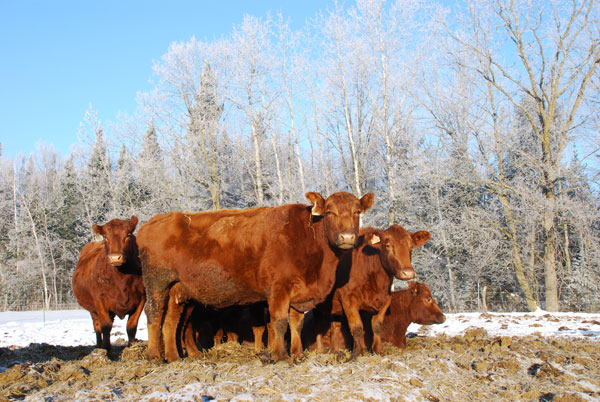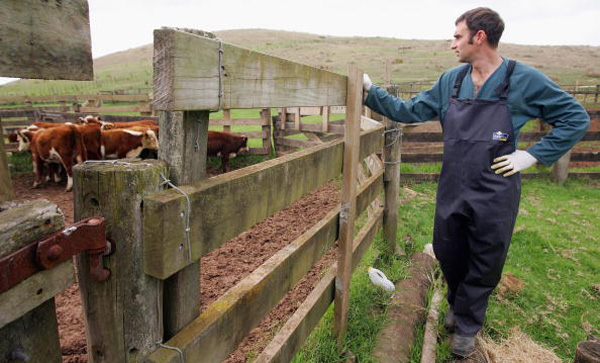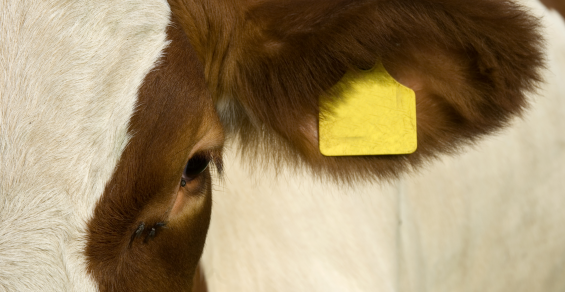The first case of BSE in the U.S. was diagnosed in the state of Washington. Now the state is ground zero in an effort to better track livestock movement. The Washington State Department of Agriculture may adopt rules requiring producers to tag every cow with radio-frequency identification, a level of electronic monitoring opposed by some ranchers, reports the Capital Press.
“These (the rules) are all intended to track an animal within hours rather than within days,” State Veterinarian Brian Joseph told the Senate Agriculture Committee Nov. 14. “It’s very important we be able to do that rapidly because the more rapidly we can do that, the less economic impact there is.”
Americans usually credit the first Thanksgiving in the U.S. to the Plymouth Colony, in November 1621. The Pilgrims celebrated their first harvest in the new world with their Wampanoag neighbors. These Native Americans had helped them learn how to grow grain and vegetable crops that would thrive in the new land, and collect local wild game and fish, reports onpasture.com.
For those first Pilgrims, getting to that bountiful harvest was a huge feat. Very few Pilgrims had farming or gardening skills. The soil found in present-day Massachusetts was also very different from their native England. In the coastal area of Plymouth Colony, soils are shallow, sandy and stony.
This contrasts with the farmlands of southern England, with deep, nutrient-rich loamy soil. In addition, the English soils were more fertile and tillable by hand or with draft animals to a depth of perhaps 6-12 inches. Massachusetts coastal soils were not deep, and sit on top of hard bedrock. The Pilgrims did not bring draft animals (horses or oxen) and although the sandy soils could be tilled or cultivated by hand, they were very stony, making this difficult work.

Cows need more and better-quality feed as pregnancy progresses. Nutrient requirements in early gestation are not much different from maintenance requirements, but as the fetus grows larger, the cow’s nutrient needs increase. After calving, when a cow is lactating, she needs a much higher level of protein and energy than when she is pregnant, reports the Angus Beef Bulletin.
“If pastures are running out, some cows are losing condition. A cow that’s one body condition score lower than it should be will have trouble regaining weight during winter without supplement. For the thin cow to stay warm, she will require an extra 1,400 pounds of hay compared to a cow in proper body condition. She needs that much extra hay just to stay warm and hold her own, without gaining weight. That’s one extra big round bale per cow through winter, and that’s a major expense,” says Beef and Forage Specialist Barry Yaremcio with Alberta Agriculture and Forestry.

What’s the future for rural America? According to USDA, if present trends continue, there will be fewer rural residents in the years ahead. The rural population is shrinking due to outmigration of young adults, fewer births, increased mortality among working-age adults, and an aging population. Rural job growth since 2011 has been well below the urban growth rate, according to a USDA report.
The report highlights recent social and economic conditions in rural America, focusing on county-level trends in population, employment, income, poverty, and broadband connectivity.

Dan Thomson, Jones Professor of Production Medicine and Epidemiology at the Kansas State University College of Veterinary Medicine says with the problems in animal agriculture today, veterinarians may be the most important advocate for the beef industry and food animal production. According to The Fence Post.
“My job is to work with retailers of the beef industry, and tell them what a good job we do as an industry, how hard we work, how safe our food is, and how much we care about our animals and neighbors,” Thomson says. “Based on what the retailer asks for, I go out into the country and say to producers, ‘Here are some things our customers want us to do in the future.'”




Leave A Comment